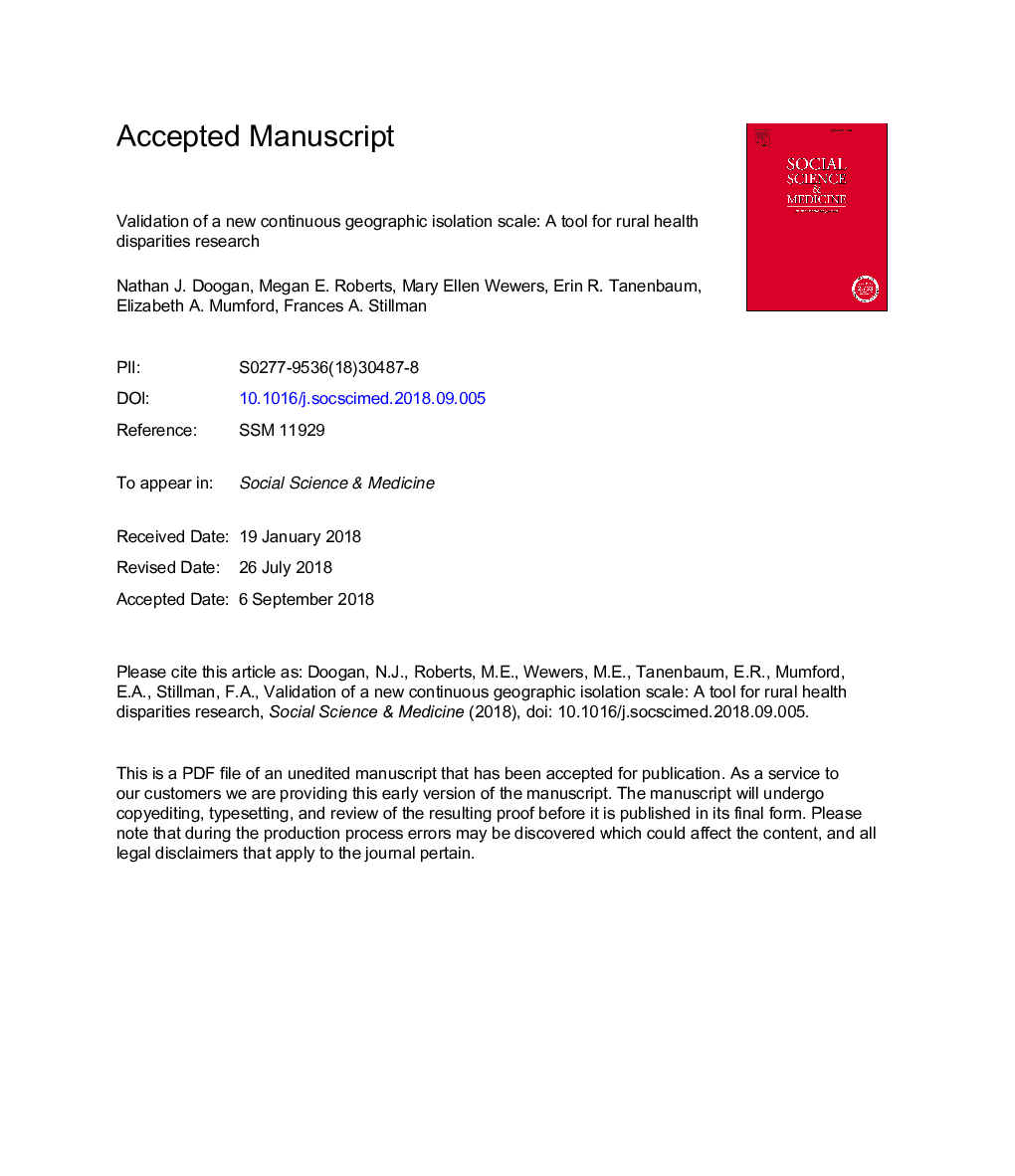| Article ID | Journal | Published Year | Pages | File Type |
|---|---|---|---|---|
| 10147081 | Social Science & Medicine | 2018 | 39 Pages |
Abstract
The purpose of this study was to develop and test a new continuous measure for rural health disparities research that characterizes geographic areas according to a perspective of access to resources. We call the measure Isolation and anticipate it will be useful as an alternative to commonly used rural classification schemes (e.g., the Census Bureau's measure). Following the best known standards for measuring rurality, it captures the trade-off between access to resource-rich, high-population-density areas and the cost of travel to those areas; thus even intrinsically low-resource areas may have high access to nearby resources. Validity was tested with proxies such as distance to hospitals, physician availability, and access to high quality food. The Isolation scale demonstrated good construct validity (i.e., both convergent and criterion validity). Fit statistics indicated that, compared to other commonly-used urban/rural definitions, the Isolation scale was the best overall measure when predicting several proxies for rurality, even when categorized. We also show that the measure does a substantially better job at explaining national health outcome data at the state level. This new continuous Isolation scale shows considerable promise for improving our conceptualization, theorization, and measurement of the features of rurality that are pertinent to rural health disparities research, and can also be useful to policy makers who may find value in using isolation thresholds that are most relevant to their policy planning needs.
Related Topics
Health Sciences
Medicine and Dentistry
Public Health and Health Policy
Authors
Nathan J. Doogan, Megan E. Roberts, Mary Ellen Wewers, Erin R. Tanenbaum, Elizabeth A. Mumford, Frances A. Stillman,
